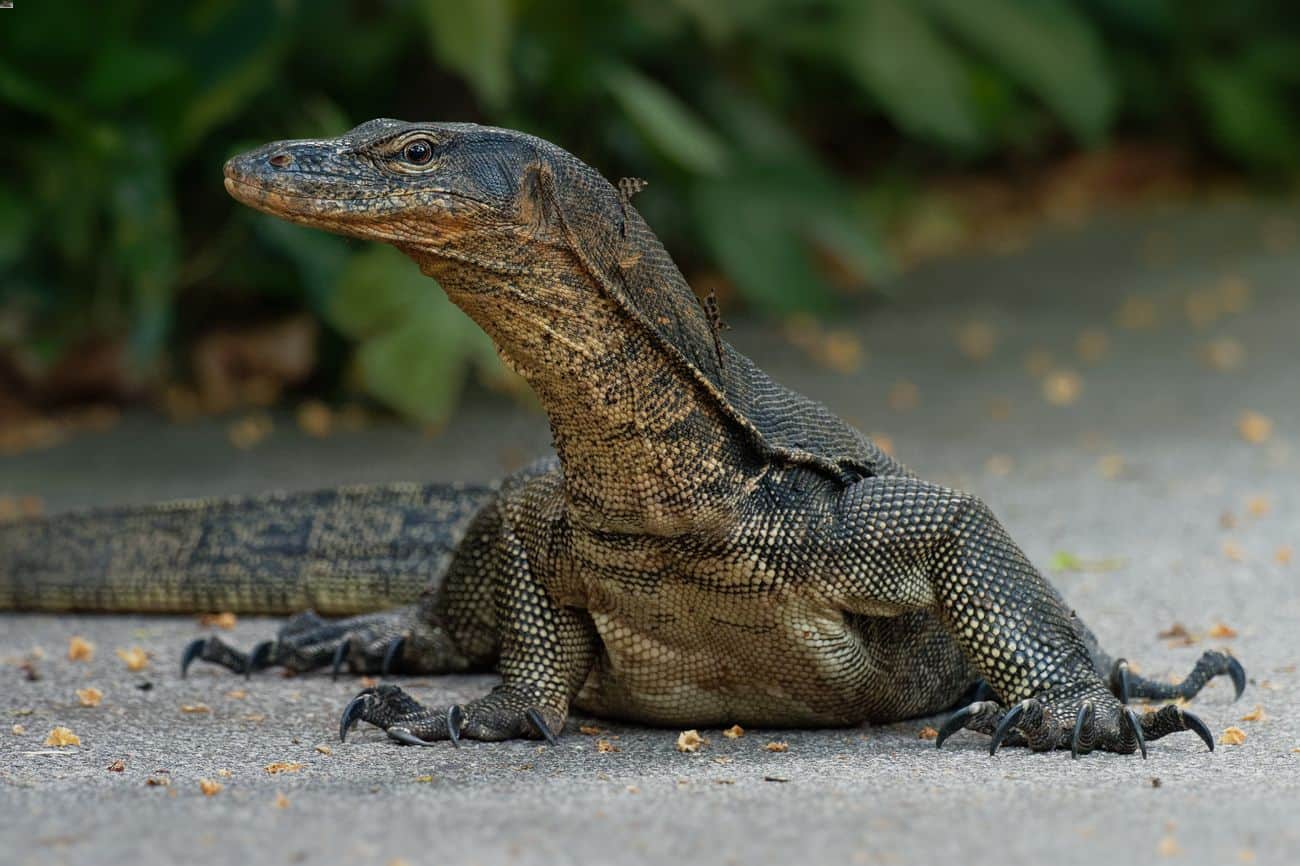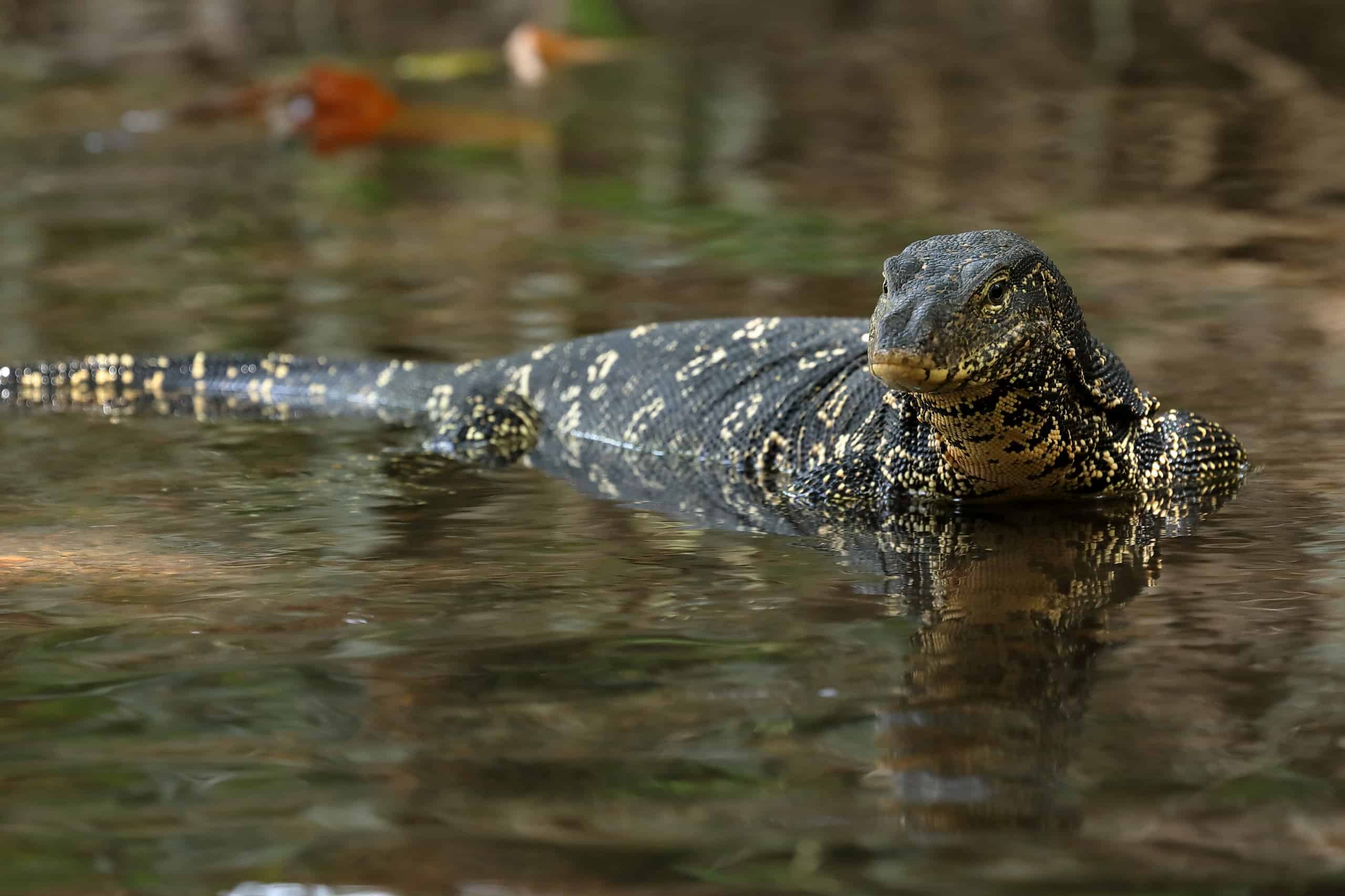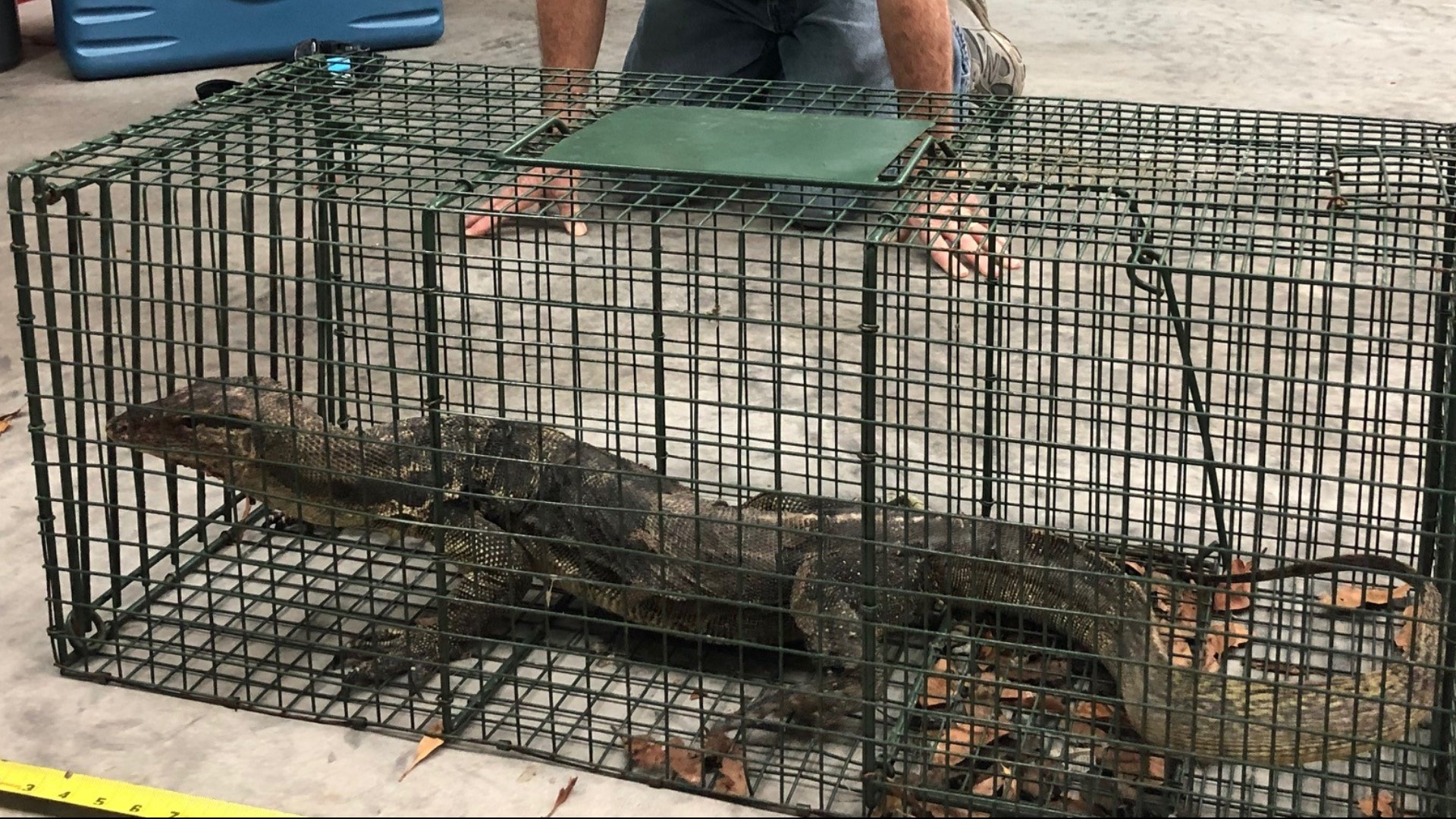Taxonomy and Description

Asian water monitor florida – The Asian water monitor (Varanus salvator) is a large, semi-aquatic lizard native to Southeast Asia. It is a member of the family Varanidae, which also includes the Komodo dragon. Asian water monitors are known for their impressive size, powerful jaws, and ability to swim and dive in water.
The Asian water monitor lizard, an invasive species in Florida, poses a threat to native wildlife. However, news about supplemental security income updates may provide some relief for those affected by its presence. These updates can offer financial assistance to individuals and families who have been impacted by the lizard’s destructive behavior, helping them cope with the challenges it presents.
Physical Characteristics
Asian water monitors are typically dark green or brown in color, with a lighter underside. They have a long, muscular body with a thick tail. Adult Asian water monitors can grow to be over 6 feet (1.8 meters) in length, and weigh up to 40 pounds (18 kilograms). They have large, sharp claws on their feet, which they use for climbing and digging. Asian water monitors also have a long, forked tongue, which they use to sense their surroundings.
Asian water monitors in Florida have become a growing concern, leading to a state of emergency in some areas. These invasive lizards pose a threat to native wildlife, as they compete for food and habitat. Their presence has also raised concerns about public safety, as they can be aggressive when provoked.
Scientific Classification
The Asian water monitor is a member of the genus Varanus, which is the largest genus of lizards in the world. Asian water monitors are closely related to the Komodo dragon, and the two species share many similarities. However, Asian water monitors are smaller than Komodo dragons, and they have a more aquatic lifestyle.
The Asian water monitor lizard, a formidable reptile native to Southeast Asia, shares an unexpected connection with the offense of driving with a suspended license. Just as the water monitor’s ability to navigate murky waters is compromised by legal restrictions, so too does driving while suspended pose a significant threat to public safety.
Both scenarios highlight the consequences of disregarding the law, with potentially severe repercussions for those who choose to flout it. Yet, despite the risks involved, some individuals persist in driving with suspended licenses, just as some water monitors may venture into forbidden waters.
It is a testament to the human capacity for recklessness and the dangers that can arise when individuals prioritize their own convenience over the well-being of others.
Evolutionary History, Asian water monitor florida
The Asian water monitor is thought to have evolved from a group of terrestrial lizards that lived in Southeast Asia millions of years ago. Over time, these lizards adapted to a more aquatic lifestyle, and they eventually evolved into the Asian water monitor that we know today.
In the murky depths of Florida’s waterways, the Asian water monitor roams, its powerful tail propelling it through the water. Like Hailey Bieber’s engagement ring , which sparkles with a timeless elegance, the Asian water monitor’s presence captivates the imagination, leaving a lasting impression in the annals of the wild.
Adaptations for Aquatic Environments
Asian water monitors have a number of adaptations that enable them to thrive in aquatic environments. These adaptations include:
- Webbed feet: Asian water monitors have webbed feet that help them to swim and dive.
- Long tail: Asian water monitors have a long tail that they use to propel themselves through the water.
- Scales: Asian water monitors have scales that are covered in a thin layer of mucus. This mucus helps to keep the lizard’s skin moist and prevents it from drying out.
- Salt glands: Asian water monitors have salt glands that help them to excrete excess salt from their bodies. This is important because Asian water monitors often live in brackish water, which is a mixture of fresh and salt water.
Distribution and Habitat: Asian Water Monitor Florida

The Asian water monitor, native to Southeast Asia, is now a well-established invasive species in Florida. Let’s delve into its distribution and habitat preferences.
Native Range and Distribution in Florida
Asian water monitors are native to Southeast Asia, ranging from India and Bangladesh to Thailand and Vietnam. In Florida, they were first introduced as exotic pets and later escaped or were released into the wild. They have since established stable populations in several counties, primarily in South Florida.
Preferred Habitats
Asian water monitors thrive in a variety of wetland habitats, including freshwater swamps, marshes, canals, and ponds. They prefer areas with dense vegetation that provides cover and ample prey. They are also known to inhabit urban environments, utilizing storm drains and retention ponds as suitable habitats.
Impact of Habitat Loss and Fragmentation
Habitat loss and fragmentation pose significant threats to Asian water monitor populations. Development and urbanization have encroached upon their natural habitats, reducing their range and fragmenting their populations. This fragmentation can hinder movement, genetic exchange, and access to resources, potentially leading to population decline.
Diet and Behavior

Asian water monitors are opportunistic predators with a diverse diet that includes a wide range of prey items. They are primarily carnivorous, but will also consume plant material and fruits on occasion. Their prey selection is influenced by availability and habitat, and they are known to adapt their feeding strategies to suit different environments.
In aquatic habitats, Asian water monitors prey on fish, frogs, crustaceans, and mollusks. They are skilled swimmers and often stalk their prey underwater, using their powerful tails to propel themselves through the water. On land, they hunt rodents, birds, reptiles, and small mammals. They are also known to scavenge on carrion and consume human refuse.
Social Behavior and Territoriality
Asian water monitors are solitary animals that are not known to form social bonds. They are territorial and will defend their territory from other water monitors, especially during the breeding season. Males are particularly aggressive during this time and will fight to establish and maintain their territories.
Asian water monitors are also known to be aggressive towards other wildlife species, especially those that are perceived as a threat to their food or territory. They have been known to attack and kill other reptiles, including snakes and crocodiles.
Interactions with Other Wildlife Species
Asian water monitors can have a significant impact on the populations of other wildlife species in their habitat. They are known to prey on native frogs, lizards, and snakes, and their presence can lead to a decline in these populations. In some areas, Asian water monitors have also been known to prey on domestic animals, such as cats and dogs.
The introduction of Asian water monitors to new areas can also disrupt the local ecosystem. They can compete with native predators for food and resources, and their aggressive behavior can lead to the displacement of other wildlife species.
In the swamplands of Florida, the Asian water monitor, a formidable predator, roams freely. Its powerful jaws and keen eyesight make it a formidable hunter. While these creatures may evoke awe, their presence has also sparked concerns about the delicate ecosystem.
Fortunately, news has emerged that supplemental security income recipients may soon benefit from a financial boost. Click here to learn more about this potentially life-changing development. As the sun sets over the Florida Everglades, the Asian water monitor continues its nocturnal prowls, oblivious to the complexities of human affairs.